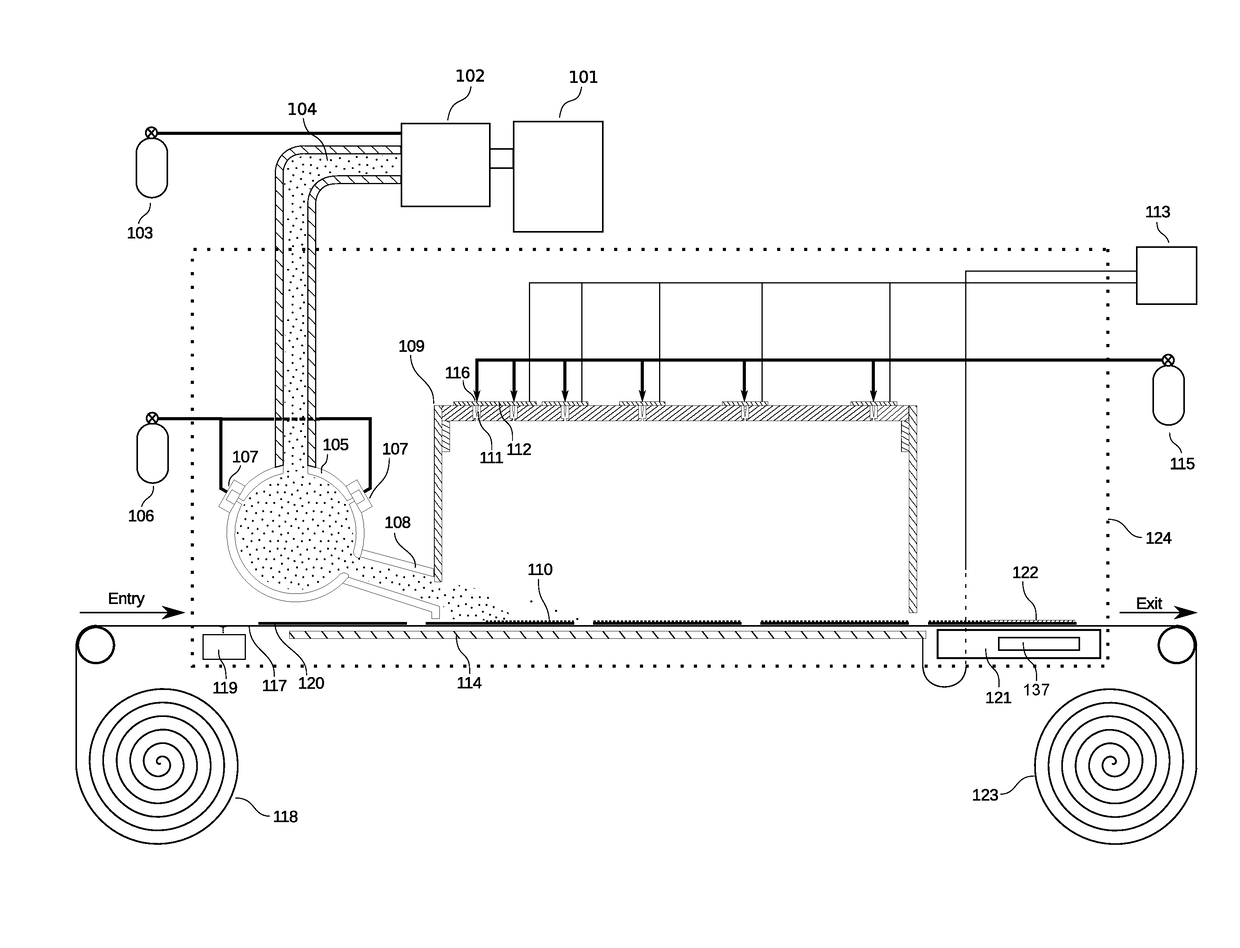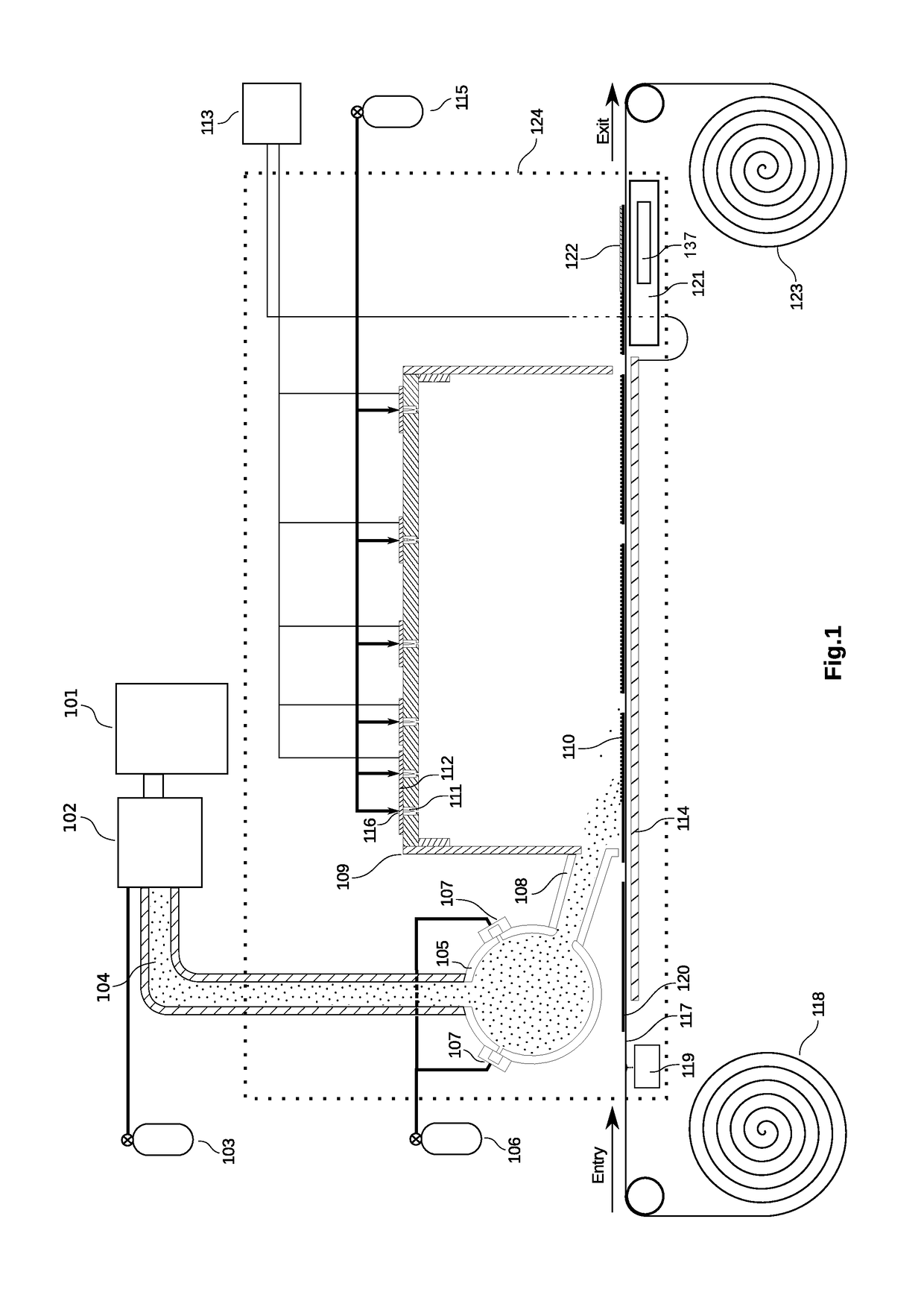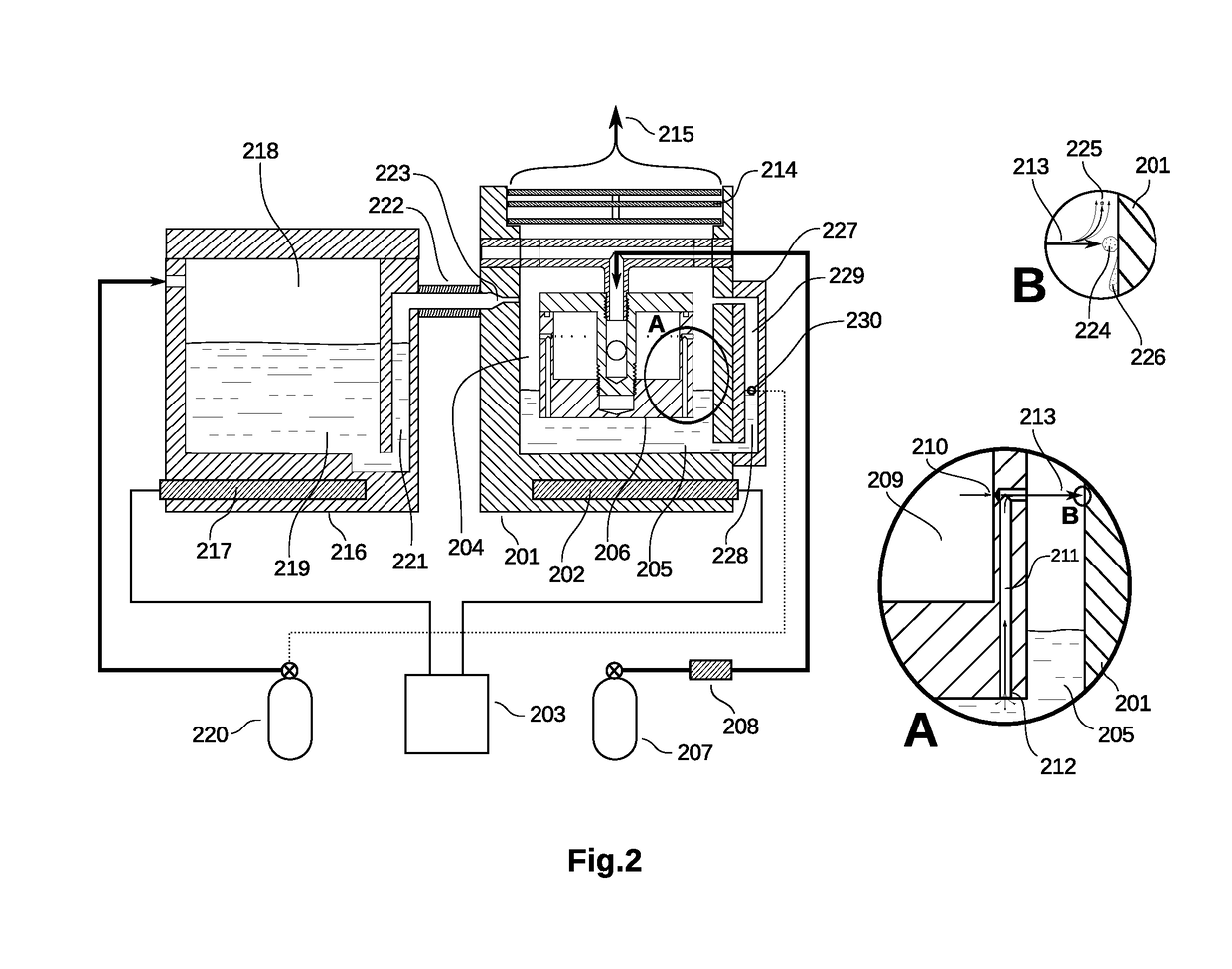Apparatus for depositing a thin layer of polymer resist on a substrate
a technology of polymer resist and substrate, which is applied in the direction of photomechanical apparatus, instruments, nanoinformatics, etc., can solve the problems of increasing shipping costs, reducing the efficiency of deposition, so as to achieve the effect of reducing the cost and complexity of dealing, reducing the cost of deposition, and reducing the cost of dumping
- Summary
- Abstract
- Description
- Claims
- Application Information
AI Technical Summary
Benefits of technology
Problems solved by technology
Method used
Image
Examples
Embodiment Construction
[0024]It is desired to deposit the polymer material by first creating an airborne particle form of the polymer or aerosol, which can be accomplished by a variety of methods. In order to create thin layers it is desirable to create very fine particles and to avoid the deposition of overly large particles. For example, consider the goal of creating a 2 micron thick layer of polymer. While a uniform, sparse coating of 100 micron particles could have the proper amount of material to form a 2 micron coating, the individual particles would be so far apart that they would not adequately flow to form a continuous layer of uniform thickness. At the other extreme, if every particle were smaller in size than the layer thickness and uniformly distributed over the surface of the substrate, then a continuous film of uniform thickness could certainly be made after flow. However, the inventors have found that the requirement on particle size is not as strict as this condition suggests. This is adva...
PUM
| Property | Measurement | Unit |
|---|---|---|
| thickness | aaaaa | aaaaa |
| thickness | aaaaa | aaaaa |
| thick | aaaaa | aaaaa |
Abstract
Description
Claims
Application Information
 Login to View More
Login to View More - R&D
- Intellectual Property
- Life Sciences
- Materials
- Tech Scout
- Unparalleled Data Quality
- Higher Quality Content
- 60% Fewer Hallucinations
Browse by: Latest US Patents, China's latest patents, Technical Efficacy Thesaurus, Application Domain, Technology Topic, Popular Technical Reports.
© 2025 PatSnap. All rights reserved.Legal|Privacy policy|Modern Slavery Act Transparency Statement|Sitemap|About US| Contact US: help@patsnap.com



